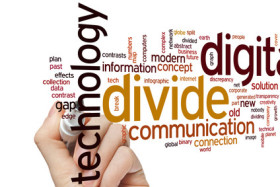Looking forward, looking back

By Phoebe Schlanger
February 28, 2014
This is going to be a year of anniversaries. Of course we will be discussing the Civil Rights Act, the War on Poverty, and Brown vs. Board of Education. I’d like to take a moment to reflect on the 30th anniversary of the Apple Macintosh computer.
What does this have to do with educational equity?
My son’s 6th grade social studies class was doing a segment on human rights. His homework assignment was to pick one from the Universal Declaration of Human Rights and write about it. My son picked technology.
My first thought was “what does that have to do with human rights?” (and why didn’t he pick something easier?). As he did his research, I realized he was right.
Apple introduced a computer with the idea to get one into everyone’s hands. According to the U.S. Census Bureau, in 1984, 8% of households had a computer at home. By 2012, the number had jumped to 79%. That is remarkable. (source)
The dark side of the statistics has to do with the digital divide – those who are highly connected (who access the Internet from multiple locations and multiple devices) and those who have no connectivity.
Groups with high connectivity include: young adults (37%), Asians (31%), Non-Hispanic Whites (31%), individuals with incomes over $150,000 (31%), those with steady employment (52%), and those with college degrees (40%). On the other end of the spectrum, groups with no connectivity include: Blacks (25%), Hispanics (25%), individuals with less than $25,000 (36%), and individuals who did not complete high school (45%). (source)
As my son delved into the topic, we found ourselves talking about fairness. Some schools have massive amounts of technology and some have little or none. This disparity accelerates the gaps between students in the neediest school districts and those from well-off school districts. We must work together to find a solution.
Gene Sperling, Director of the National Economic Council, said, in a Washington Post-sponsored forum:
So shame on us — really, shame on us if we let the wonders of educational technology and broadband lead to more inequality as opposed to less — as opposed to more opportunity, more leveling of giving everybody a chance. That is a great challenge. I hope you keep pushing on this theme because technology moves quick. So it’s either going to quickly feed disparity or it’s going to help address disparity. Let’s hope that we are doing this to bridge the divide, bridge educational disparity, be what our country is supposed to be about, which is the accident of your birth is not supposed to overly determine the outcome of your life. And how we deal with this issue can make a big difference in whether we do or don’t live up to that ideal.
Read.

